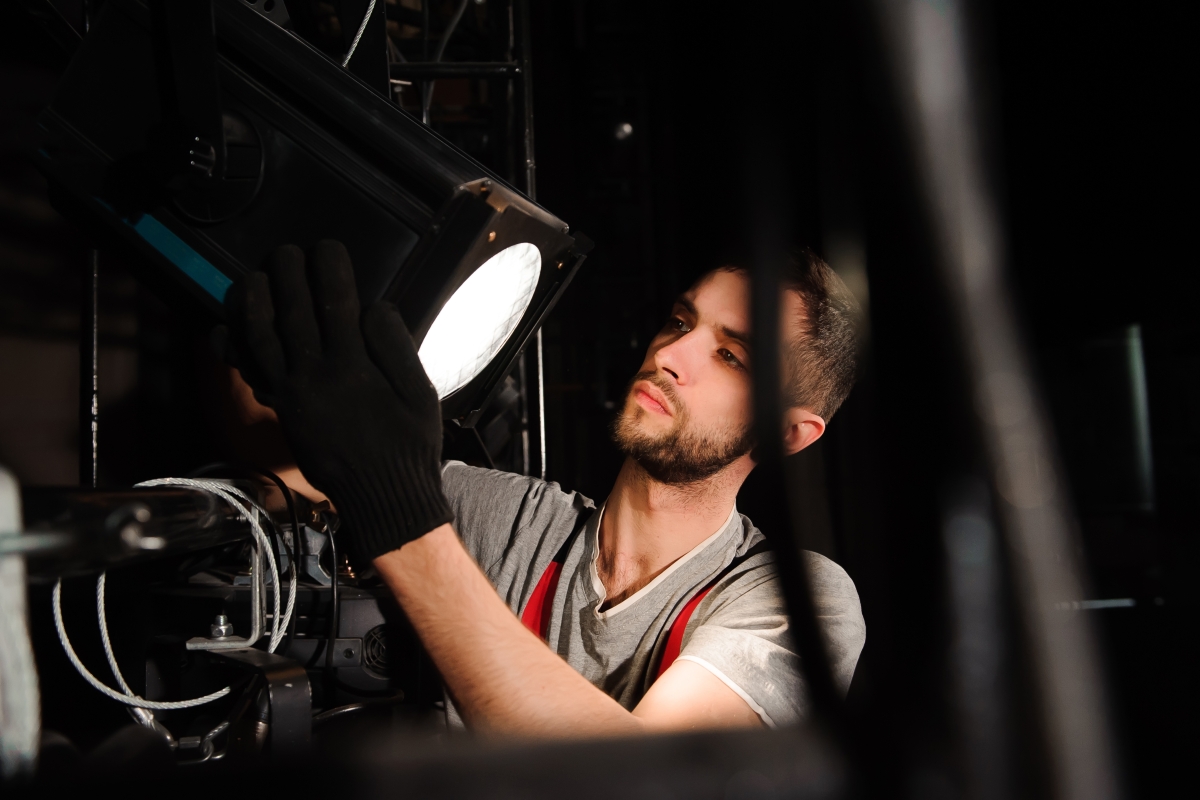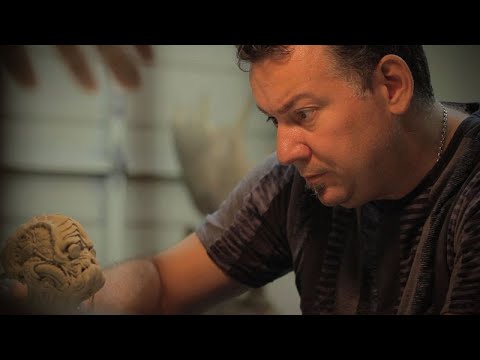Career Overview
This occupational group includes a range of technical, co-ordinating and supervisory workers who co-ordinate and perform specific activities for television, radio and motion picture productions, news broadcasts, theatre and stage productions, and other live or recorded productions.
People in this group:
- Work for television and radio stations and networks, recording studios, motion picture and video production companies, concert promoters and theatre, stage and dance companies
- Should have good interpersonal skills
- Should have the ability to work independently and as part of a team
- Should be technically and mechanically inclined and have strong organizational skills
- Should also be creative and able to follow detailed instructions
Job Titles
Duties
Floor managers:
- Co-ordinate camera operators and other technical staff, and cue announcers, actors and performers during news broadcasts and television program tapings
Key grips:
- Supervise grips, gaffers and stagehands who rig, place, move and dismantle lights, sets, backdrops, scenery and other stage equipment
Gaffers and lighting technicians:
- Set up, operate and make repairs to lights and other electrical equipment in studios and on sets and stages
Stunt co-ordinators and special effects technicians:
- Design and co-ordinate special effects such as fires, explosions and crashes
Makeup artists:
- Apply cosmetic and special effects makeup on actors and other performers
Costumiers:
- Study scripts to determine the necessary costumes and oversee the acquisition, fitting and maintenance of costumes
Settings shop forepersons:
- Help prepare the construction specifications for sets
Property masters:
- Identify and list the necessary props and place them during rehearsals and performances
Earnings
Earnings is income that workers receive in exchange for their labour. Depending on the type of employment, earnings can be in the form of wages (hourly), salaries (fixed monthly or annual) or self-employed earnings.
Work Environment
# Workers Employed
5,710% Employed Full Time
41%Workers in this group may be required to work irregular hours, including overnight shifts. Since work in this industry is often project-based, workers may experience periods of unemployment.
Working conditions for other technical and coordinating occupations in motion pictures, broadcasting and the performing arts vary depending on the specific occupation. Work may be in movie or broadcast studios, in theatres or on location. Workers may be required to travel to various locations, depending on the project.
Employees may work closely with performers and backstage crews. Some positions involve moving heavy equipment, dismantling sets and climbing scaffolds in studios and theatres.
Career Pathways
Depending on the size of the production or broadcasting studio, there may be an overlap in duties among occupations in this group.
With appropriate education and experience, workers in other technical and co-ordinating occupations in motion pictures may progress to senior or supervisory positions.
Occupational Interests
It’s important to understand what kinds of occupations align with your interests.
For more about occupational interests visit Skills for the Future Workforce > Characteristics.
Here are the top occupational interest(s) for this career profile:
Education, Training and Skills
For most occupations in this group, completion of a college or university program in broadcasting, technical production for theatre, theatre arts or a related field is required for employment. Other requirements may include:
- Several years of work experience in a related support position in motion pictures, broadcasting or the performing arts
- Membership in a related union
Makeup artists generally need a portfolio of work in order to demonstrate their creative and technical ability to employers. Floor managers also require a portfolio of work.
For gaffers, lighting technicians, key grips and other stage technicians, completion of a college program or other specialized training program in technical production for theatre is required.
In B.C., SkilledTradesBC offers a two-year apprenticeship program for grips and another program for set dressers. Trade certification is not mandatory for these workers, but it can offer increased job opportunities. Apprenticeships programs:
- Can be started in secondary school, through entry-level training at colleges and technical institutes, or by direct entry to the workforce
- Require workers to find a sponsor employer willing to participate in the program
For more information, see SkilledTradesBC's website at: https://skilledtradesbc.ca.
Education programs in B.C.

Top Skills
Every job calls for a certain set of skills. Knowing those skills is the first step in finding a good career fit.
Here, you will find the 10 most relevant workplace skills. Some are more important to achieving success in a certain career than others. These skills may come naturally to you or you may need to gain them through education, training and experience.
See the list of work-related skills below, ranked in order of importance for this career. Check out the list and see if this career matches your skills—take that first step!
Talking to others to share information effectively.
Giving full attention to what other people are saying, taking time to understand the points being made, asking questions as appropriate, and not interrupting at inappropriate times.
Using logic and reasoning to identify the strengths and weaknesses of alternative solutions, conclusions or approaches to problems.
Understanding written sentences and paragraphs in work-related documents.
Adjusting actions in relation to others' actions.
Keeping track of and assessing your performance, other individuals, or organizations to make improvements or take corrective action.
Considering the relative costs and benefits of potential actions to choose the most appropriate one.
Being aware of others’ reactions and understanding why they react as they do.
Managing one’s own time and the time of others.
Communicating effectively in writing as appropriate for the needs of the audience.
Labour Market Statistics
Discover data, facts and information that have been gathered and analyzed. Learn about the characteristics of the economy and labour market in B.C.
Employment
Find out about employment types and trends by region and industry.
Employment
5,710Employment by Region







| Region | Employment | % Employment of this Occupation |
|---|---|---|
| Cariboo | 70 | 1.2% |
| Kootenay | 70 | 1.2% |
| Mainland/Southwest | 4,855 | 85.0% |
| North Coast and Nechako | 25 | 0.4% |
| Northeast | 0 | 0.0% |
| Thompson-Okanagan | 225 | 3.9% |
| Vancouver Island/Coast | 460 | 8.0% |
Labour Market Outlook
The B.C. Labour Market Outlook is a 10-year forecast of the expected supply and demand for labour in the province. It’s usually updated every year. The purpose is to provide British Columbians with the knowledge to make informed decisions on careers, skills training, education and hiring.
Forecasted Job Openings (2025-2035)
2,540Forecasted Job Openings
Forecasted Employment Growth Rate
Composition of Job Openings
Job Openings by Region (2025-2035)







| Region | Job Openings | Avg. Annual Employment Growth |
|---|---|---|
| Cariboo | 30 | 1.3% |
| Kootenay | 20 | 0.3% |
| Mainland/Southwest | 2,140 | 1.4% |
| North Coast and Nechako | 0 | -0.2% |
| Northeast | Not available | Not available |
| Thompson-Okanagan | 110 | 1.7% |
| Vancouver Island/Coast | 230 | 1.4% |
Industry Highlights
Learn about the opportunities in B.C.'s major industries, including employment trends, earning potential, locations of work and more.
Forecasted Job Openings by Industry
| Industry | Job Openings (2025-2035) |
|---|---|
| Information, Culture and Recreation | 1,340 |
| Health Care and Social Assistance | 360 |
| Professional, Scientific and Technical Services | 350 |
| Educational Services | 100 |
| Public Administration | 90 |
Resources
-
Academy of Canadian Cinema and Television (ACCT)www.academy.ca
-
Canadian Association of Broadcasterswww.cab-acr.ca
-
Canadian Media Producers Association (CMPA)www.cmpa.ca
-
SkilledTradesBCskilledtradesbc.ca/








